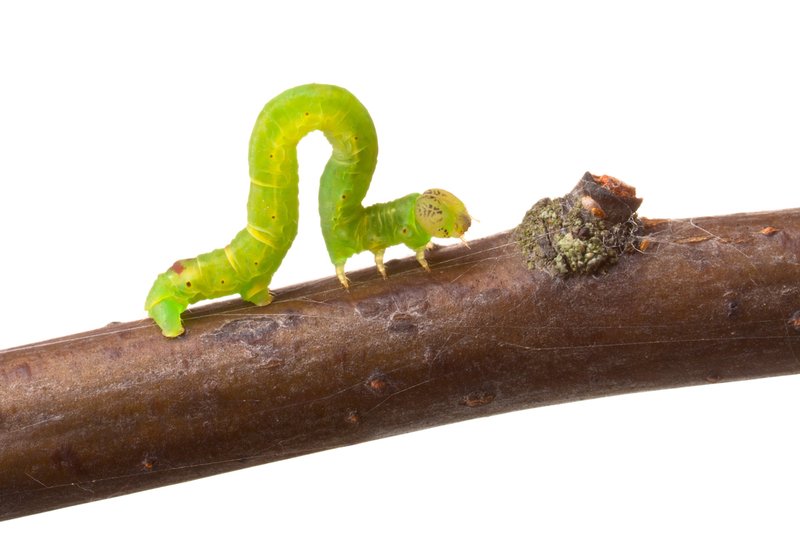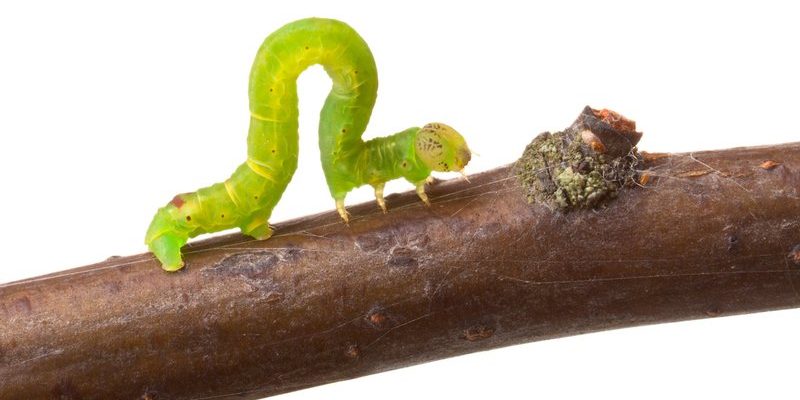
Inchworms, which are actually the larvae of moths, can be mesmerizing to watch. They’re not just cute but also display some interesting behaviors. You might be wondering if you can create a suitable environment for them in an observation terrarium, and the answer is yes—with a few caveats. So, grab a cup of coffee, and let’s explore how to create the perfect habitat for these tiny, inching wonders.
What Are Inchworms?
Before we get into the specifics of keeping inchworms in a terrarium, let’s clarify what they actually are. Inchworms belong to the larvae stage of certain moth species, particularly those in the families Geometridae and Noctuidae. You might see them inching along branches and leaves, mimicking twigs or plant matter, which helps them avoid predators.
These little guys are typically green or brown, allowing them to blend in with their surroundings. They measure around 1 to 2 inches in length, and their movement is quite unique. They can “inch” forward by pulling their hind legs to their front legs, which is where they get their name. Each inchworm has its own personality, sometimes even displaying social behaviors, which can be delightful to observe.
Keeping inchworms in observation terrariums provides a great opportunity to learn about their life cycle. They go through several stages, including egg, larva (the inchworm stage), pupa, and adult moth. Watching this transformation can be an educational experience for kids and adults alike, making it a fun science project!
Setting Up Your Observation Terrarium
Creating the ideal environment for inchworms is crucial for their health and happiness. A terrarium is a great way to observe them closely without causing distress. Here’s how to set it up:
1. Choose the Right Container: A clear terrarium is crucial as it allows you to see the inchworms easily. Look for one that is at least 10 gallons to give them enough space to move around. A glass container with a lid works best to keep humidity in while allowing for ventilation.
2. Add Substrate: Start with a layer of soil or potting mix at the bottom of the terrarium. This acts as a natural habitat and provides nutrients. You can also mix in some leaf litter to mimic their natural environment.
3. Include Plants and Branches: Inchworms love to munch on leaves, so adding small plants or branches is essential. Consider using plants like clover or dandelion weeds that are easy to find. They not only provide food but also places for the inchworms to hide and explore.
Feeding Your Inchworms
Feeding inchworms properly is one of the most important aspects of keeping them in a terrarium. They are primarily herbivores, feeding mainly on leaves. Here’s how to make sure they stay well-fed:
– Choose Fresh Leaves: Inchworms prefer young, tender leaves. You can collect leaves from local plants but make sure they haven’t been treated with pesticides or chemicals. Washing them before feeding is a good practice.
– Regularly Change the Food: As inchworms consume leaves quickly, swap out old or wilted leaves for fresh ones every couple of days. This keeps your inchworm friends happy and healthy.
– Monitor Their Diet: Pay attention to their feeding habits. If they seem less active or stop eating, it might indicate that something is off in their environment, such as humidity or temperature issues.
Humidity and Temperature Requirements
Maintaining the right humidity and temperature is vital for the well-being of inchworms in a terrarium. Here’s what you need to know:
– Humidity Levels: Inchworms thrive in a humid environment, so misting the terrarium with water regularly can help. Aim for humidity levels around 60-70%. You’ll know it’s too dry if you see them becoming lethargic or if they start to shed their skins improperly.
– Temperature Control: Ideally, keep the temperature between 65°F to 75°F. You can achieve this by placing the terrarium in a well-lit area but away from direct sunlight to avoid overheating. A thermometer can help monitor the temperature effectively.
– Ventilation: While it’s important to keep humidity in, you also need to ensure proper ventilation. This can be accomplished using a terrarium lid that allows air exchange. A balance of humidity and air circulation is key.
Behavioral Observations and Activities
One of the most enjoyable parts of keeping inchworms in a terrarium is observing their behavior. They’re not just little food machines; their movements and interactions can be quite fascinating. Here are a few things to look out for:
– Movement Patterns: You’ll notice how they move—slowly inching along, often stopping to munch on some leaves. It’s a bit like watching a slow-motion nature documentary unfold right in front of you.
– Social Interactions: If you have more than one inchworm in your terrarium, you might see them interacting with each other. Sometimes they’ll seem to follow one another or even share a leaf. It’s a small glimpse into their social structure.
– Molt Stages: Inchworms molt as they grow, shedding their skin several times before becoming pupae. Watching this process can be thrilling, as it shows their development and growth firsthand.
Common Challenges When Keeping Inchworms
While keeping inchworms in a terrarium can be rewarding, there are challenges to consider. Here are some common pitfalls and how to avoid them:
– Pest Problems: If you don’t maintain a clean environment, you could attract unwanted pests like mites or mold. Regularly clean the terrarium and keep an eye out for any signs of trouble.
– Overcrowding: Too many inchworms in one small space can lead to stress and competition for food. Stick to a reasonable number based on the size of your terrarium, usually around 2-3 inchworms in a mid-sized setup.
– Temperature Fluctuations: Watch out for temperature swings. If it gets too hot or cold, your inchworms could become inactive or stressed. A stable environment is key to keeping them healthy.
So, can inchworms be kept in observation terrariums? Absolutely! With a little care and attention to their specific needs, you can create a vibrant mini-ecosystem right in your home. Watching these fascinating creatures live, grow, and transform can be not only educational but also a truly uplifting experience.
Whether you’re sharing the joy of inchworms with kids or simply indulging your curiosity, there’s something magical about observing these tiny beings in a controlled environment. Just remember to maintain their habitat, keep an eye on their diet, and enjoy the ride as they inch along their little world. Happy observing!

